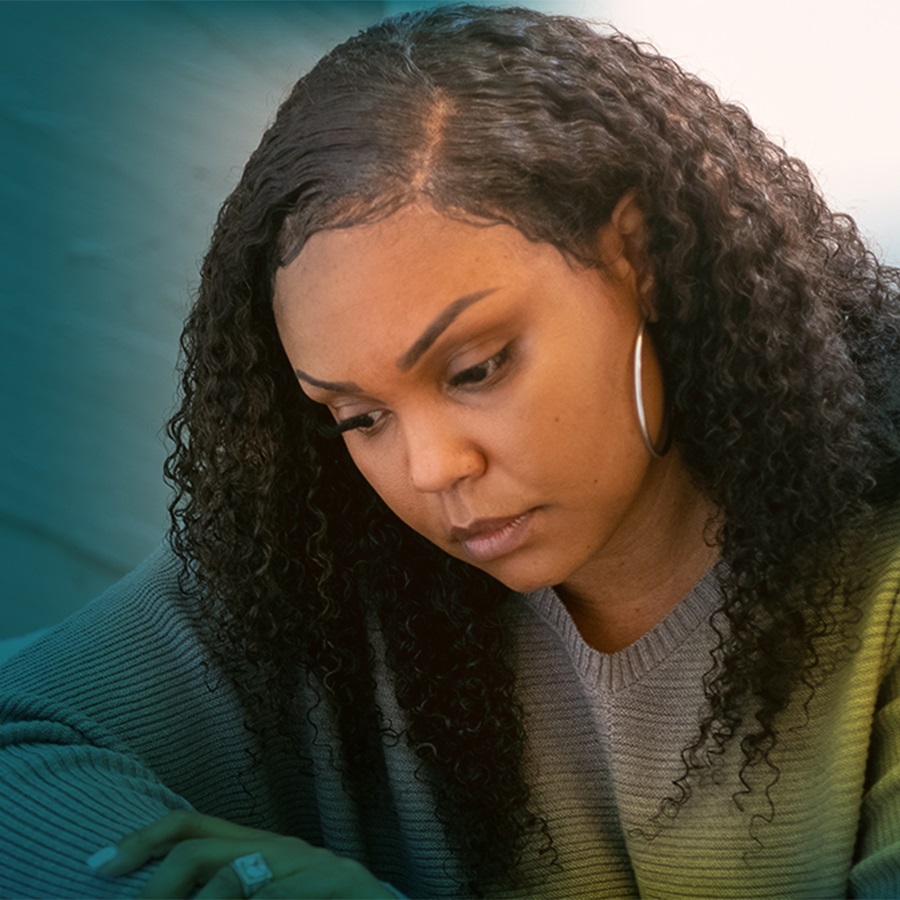PBA’s Impact Can Be Substantial
The impact of Pseudobulbar Affect (PBA) may present a considerable burden in addition to the difficulties of living with a neurologic condition or brain injury. PBA episodes can be very frustrating for individuals experiencing them, as well as for those around them, because the episodes can be misunderstood and easily lead to confusion and embarrassment.
It’s important to know that you are not alone. Many patients, including our PBA Ambassadors, have had similar experiences. Tell your doctor how PBA episodes impact you so they can help you best manage your symptoms.
PBA has a real impact on the lives of patients and those around them
“My kids seeing me have a PBA episode—it hurt. I was trying to hide it as much as possible.”
— Sequena, stroke survivor living with PBA
Individual results vary.
The Importance of a PBA Diagnosis
PBA symptoms can look like a lot of other conditions, so it can be difficult to diagnose. In fact, it is often disguised, misinterpreted, and mistaken for depression. If you are experiencing crying and/or laughing episodes that are exaggerated or don't match how you feel, you may have PBA. Talk to a specialist, such as a doctor that treats your neurologic condition or brain injury.
Carol, Sequena, and Mary-Beth are all real patients who have received a PBA diagnosis and found treatment options that have worked for them.
Here’s what they have to say about their experiences:
Carol
Patient living with TBI and PBA
[The crying] came out of nowhere. I had no idea what was going on. I didn't feel sad or depressed. After receiving my PBA diagnosis, it was such a relief. I knew what I had. I knew that it had a specific name and there was a specific treatment for it.
Sequena
Stroke survivor living with PBA
My kids seeing me have a [crying] episode, it hurt. I didn't want them to think they did anything wrong, so I would try to hide it. [Learning about PBA] was a lightbulb moment. I advocated for myself and got a diagnosis. It was great to finally know what was wrong and put a name to it.
Mary-Beth
Patient living with epilepsy and PBA
The intensity [of my crying] happened at inappropriate times. I was confused. When my neurologist told me it was PBA, I think she could read the sigh of relief on my face. Finally, after all this time to know I'm not making it up, I'm not exaggerating.
Individual results vary. All ambassadors are real patients living with PBA. Images reflect patients with PBA at the time the images were captured.
TBI=traumatic brain injury.
Learn About How
PBA Is Diagnosed
Identifying PBA with an accurate diagnosis is the first step in managing the condition.
Jill (left) is a real patient living with PBA. The other person depicted is not a real doctor. Image reflects patient with PBA at the time the image was captured.


It Could Be PBA.
Act Now.
The PBA Guidebook includes information on talking to your doctor about treatment for PBA. Request a copy by mail or download a digital version.
The person depicted is not a real patient.



